Rolls, nigiri, gunkans and maki: what makes them different?
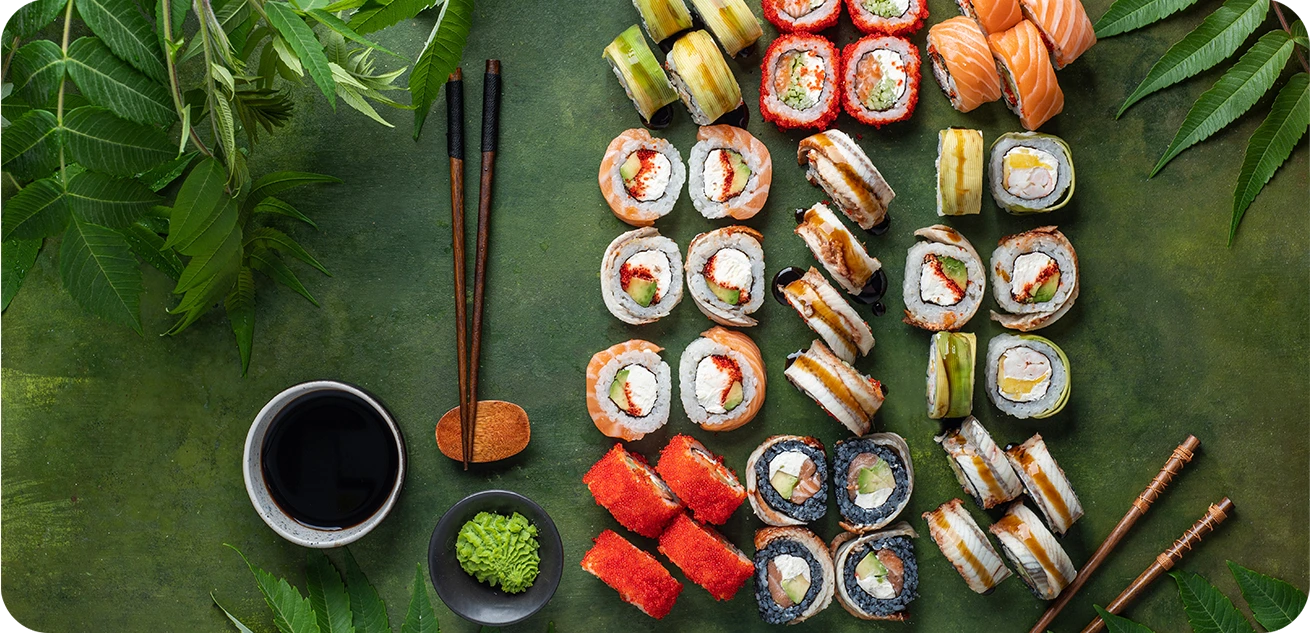
Japanese cuisine has long conquered the world. It’s hard to imagine life without your favorite rolls «Philadelphia» and «California», but many people still don’t fully understand the differences between nigiri, rolls, gunkans, maki, and other dishes.
First of all, they are all types of sushi. Secondly, to settle this question once and for all, we have gathered all the explanations.
What is sushi?
In Japanese cuisine, there is one golden rule: if a dish contains rice seasoned with vinegar and fish or seafood, it is sushi. This term describes an entire category of dishes, not just the familiar rolls.
The history of sushi began in Southeast Asia, where as early as the 8th–9th centuries, a method of preserving fish through fermentation in rice was invented. The modern sushi format appeared much later — in the 19th century, in Edo (Tokyo), when chef Hanaya Yohei started serving fresh fish on a portion of rice. By the way, back then the size of these rice portions was noticeably larger than today.
Today, the sushi category includes gunkans, nigiri, and maki — you can find them not only on the Ninja Sushi menu but all over the world.
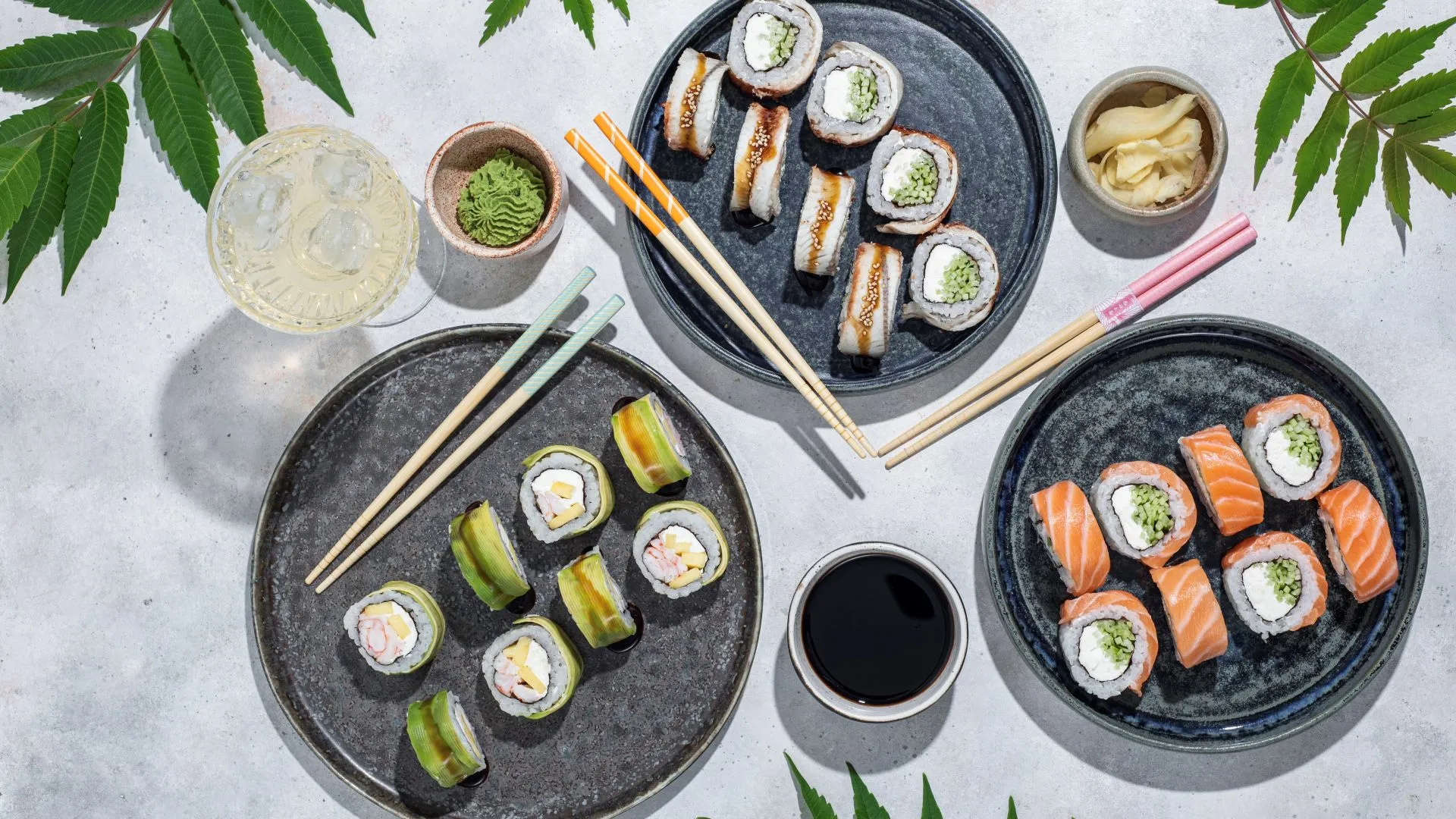
Rolls
Rolls (or makizushi, meaning «sushi roll») is the most familiar type of sushi, where rice and filling are rolled into a roll, sometimes with a sheet of nori, and then cut into even pieces.
The filling can be anything: from refreshing salmon and crunchy cucumber to sweet mango, pineapple, or even tomato. The taste of rolls is rich and layered — thanks to the combination of different textures, temperatures, and sauces.
Originally, rolls in Japan were quite simple: rice, fish, cucumber, nori. But outside the Land of the Rising Sun, they quickly evolved. That’s how «Philadelphia», «California», baked, and tempura versions, which we are so used to, appeared.
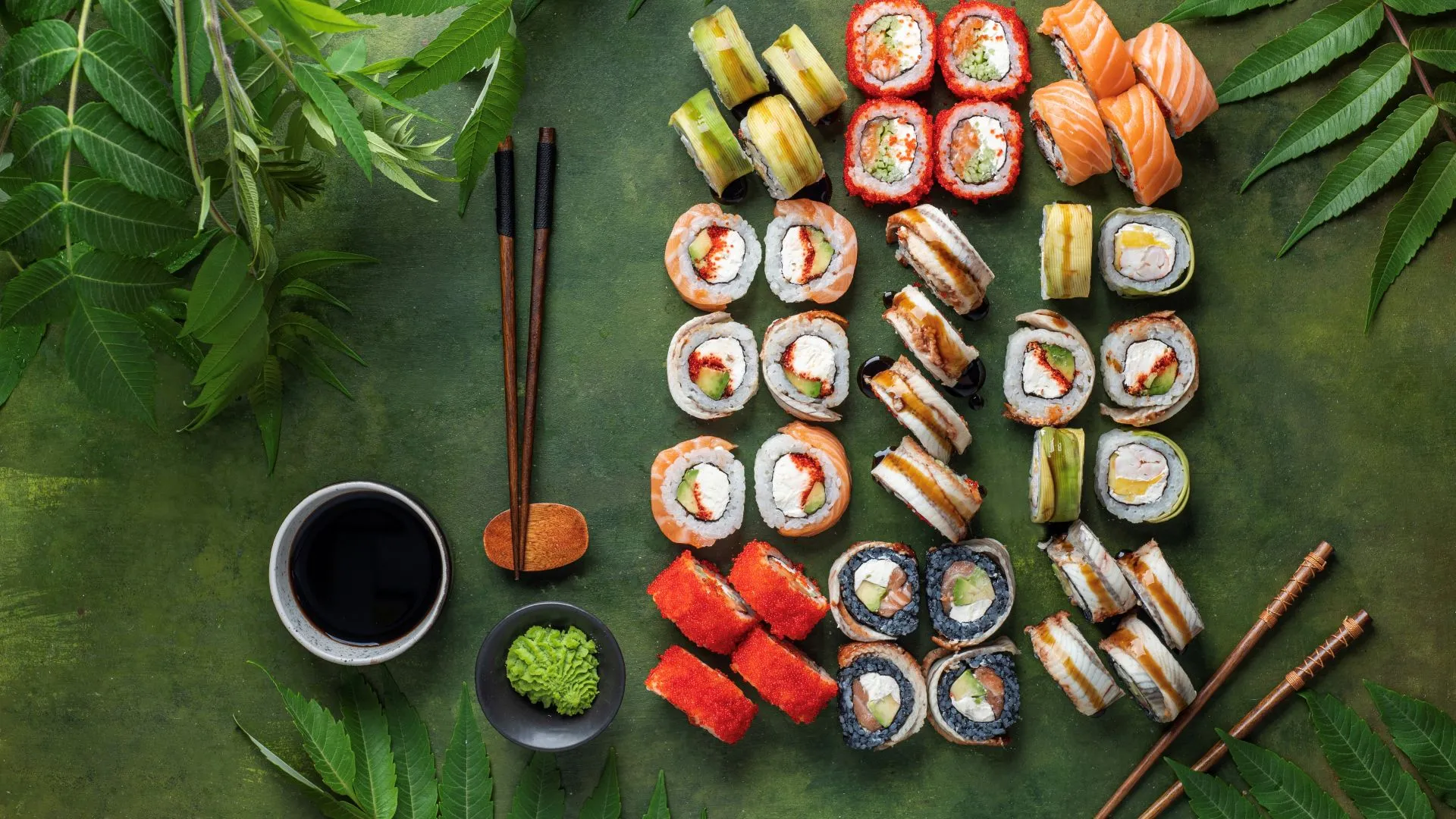
Nigiri
Nigiri (meaning «pressed sushi») appeared in the 19th century in Edo as a quick street snack. It is a small oval-shaped portion of slightly sticky rice topped with a piece of fish or seafood. Nothing more.
In taste, nigiri represents absolute minimalism. There is nothing unnecessary: just the delicate texture of the rice and fresh fish. This is one of the most authentic and honest ways to try sushi.
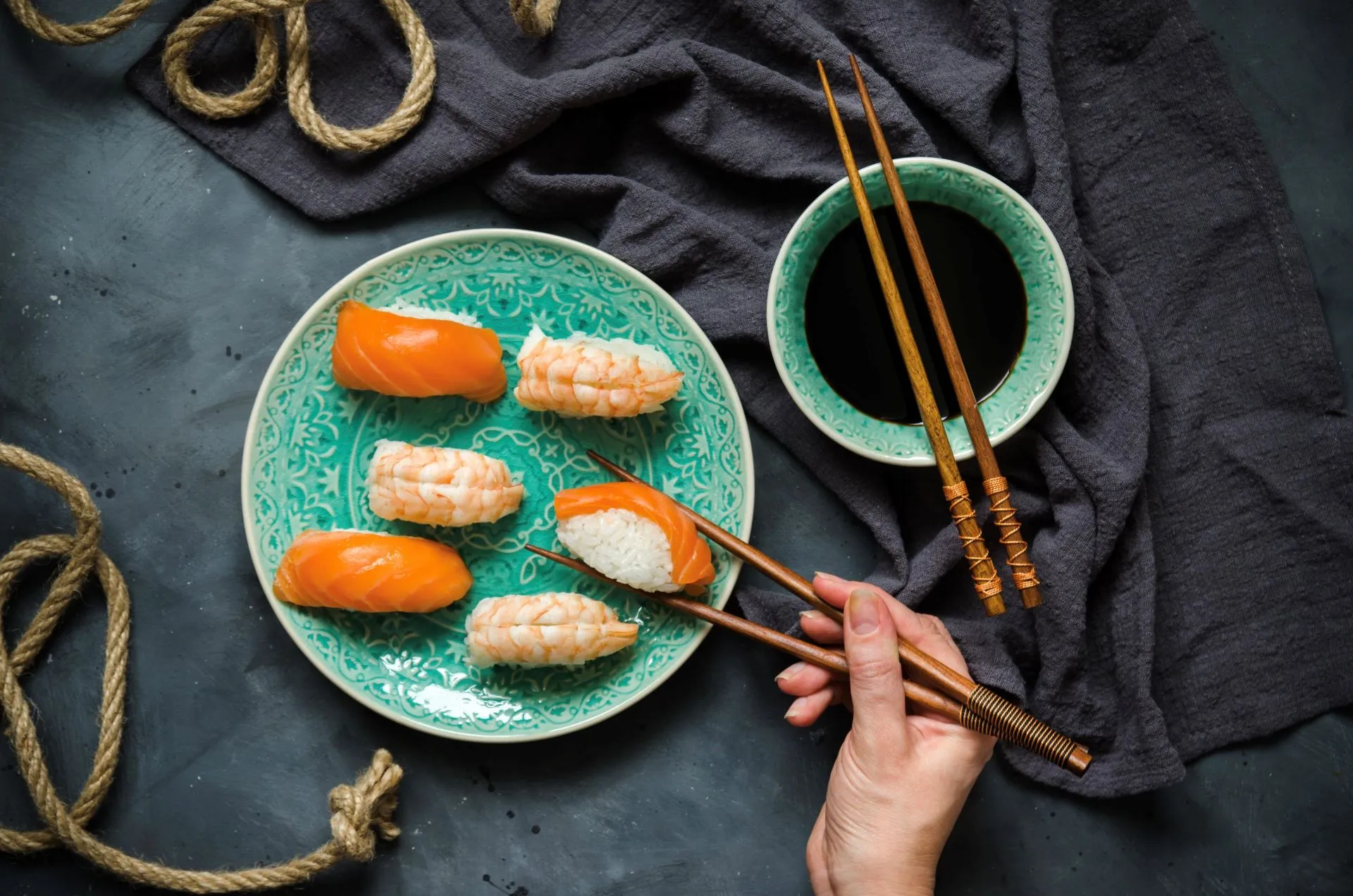
Gunkans
Gunkans (meaning «warship») were invented in 1941 in Tokyo to serve toppings that were difficult to keep on rice alone: roe, sea urchin, various seafood salads.
The rice is wrapped with a strip of nori to form a border, and the topping is placed on top. Gunkans allow new flavors and textures to be explored, they are filling, colorful, and often more intense in taste than classic sushi.
Spicy tuna gunkan with truffle
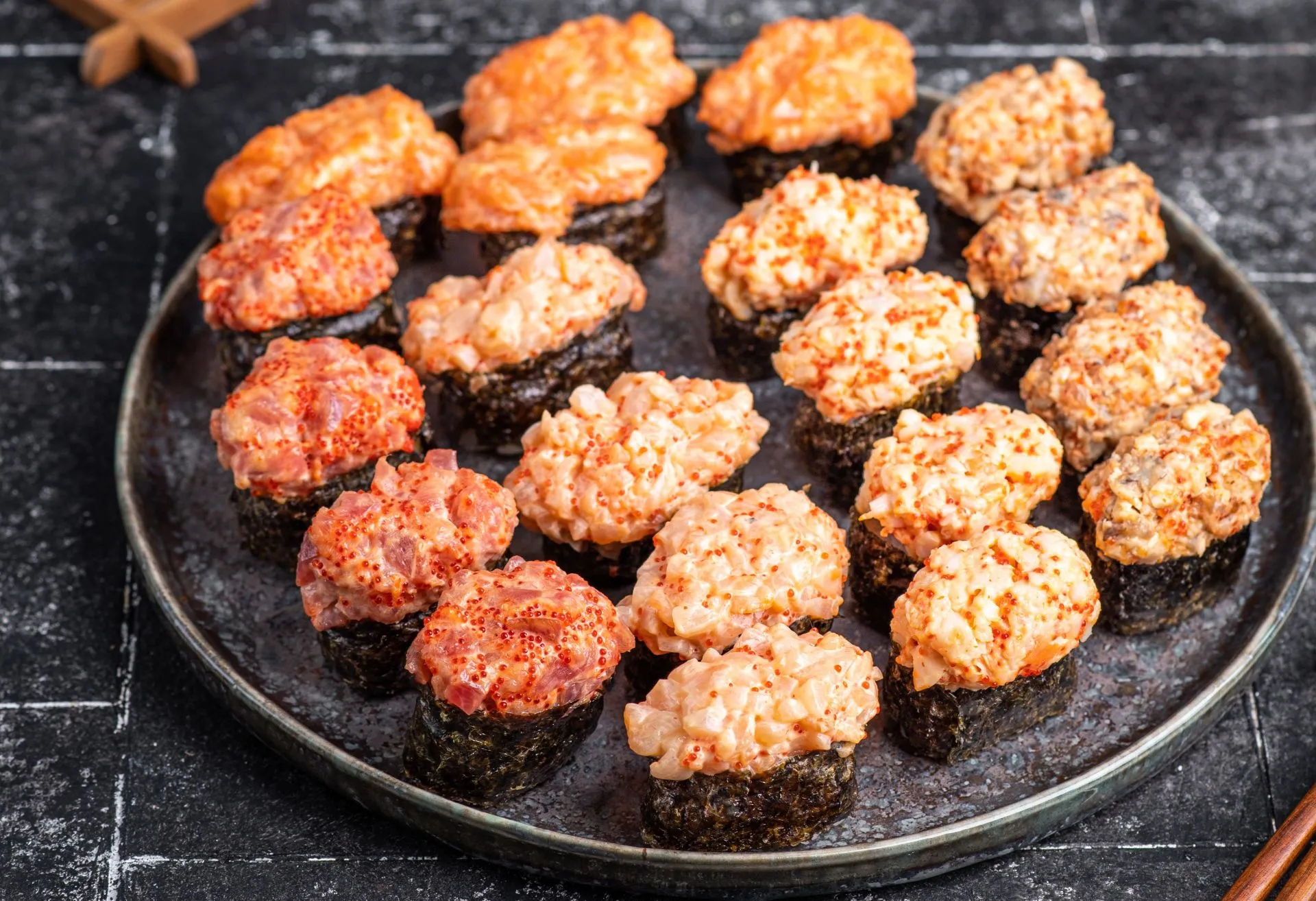
Maki
Maki (meaning «thin roll») are thin rolls, which always contain only one ingredient: for example, salmon, tuna, eel, cucumber, or avocado.
The diameter of these rolls does not exceed three centimeters, and the nori sheet tightly wraps the rice and filling. It’s a light and balanced sushi option, perfect for those who prefer clean flavors.
In Japan, maki are often served as an addition to nigiri or sashimi.
Sashimi
This is not sushi, as it contains no rice. But we decided to include it in the guide because sashimi is an essential part of Japanese gastronomy. These are thin slices of fresh fish or seafood, served without any additions to fully reveal the flavor of the ingredient.
Sashimi is one of the oldest dishes in Japanese cuisine. It is often served first to sharpen taste perception before the main meal. The key here is the quality of the ingredients: tuna, scallop, salmon — each reveals itself in a unique way.
Trying sashimi at least once is highly recommended.
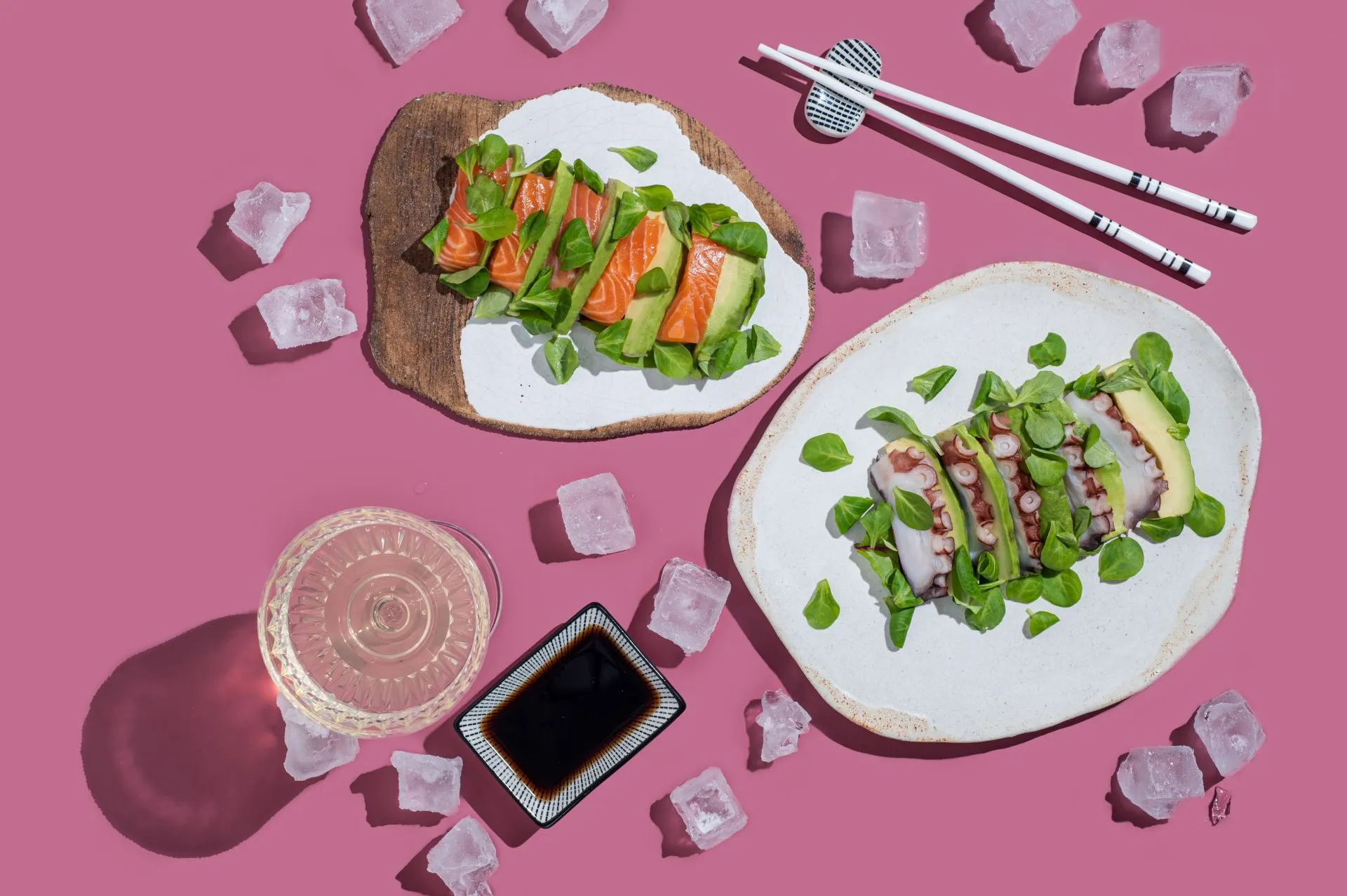
All these dishes do not compete with each other — they complement each other. Rolls focus on balanced fillings, nigiri gives a sense of minimalism and purity, gunkans offer space for experimenting with textures, maki exemplify Japanese restraint, and sashimi is for fine dining enthusiasts.
If you want to truly immerse yourself in Japanese cuisine, we recommend trying a bit of everything.
Write in the comments on Instagram about your favorite items on the Ninja Sushi menu.






